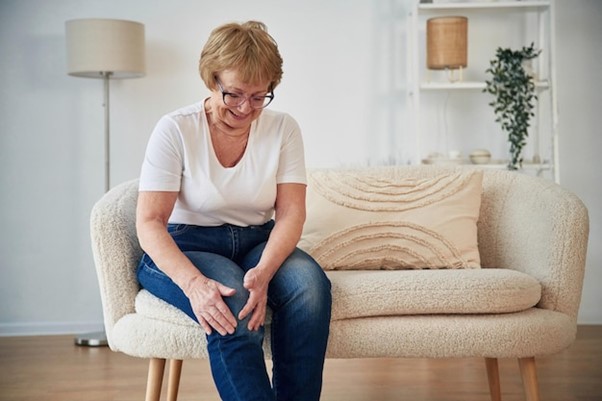Knee osteoarthritis is a condition that affects many people as they age, causing pain, stiffness, and limited movement.
While it cannot be cured, several treatments are available to manage symptoms and slow their progression.
Here’s everything you need to know about knee osteoarthritis.
What Is Osteoarthritis of the Knee?
Osteoarthritis occurs when the knee joint’s cartilage breaks down, causing the bones to rub together.
This friction results in pain, stiffness, swelling, and decreased mobility.
Over time, this can cause joint instability, making simple activities like climbing stairs or walking more difficult.
Who Is Affected by Osteoarthritis of the Knee?
Osteoarthritis of the knee is common, particularly among those over 40, and affects nearly 46% of people in their lifetime.
Women are more likely to develop it than men.
Factors such as
- Past knee injuries
- Obesity
- Genetics
- Joint misalignments
can increase the risk of developing this condition earlier in life.
What Are the Symptoms of Knee Osteoarthritis?
The common symptom of knee osteoarthritis is pain, which can worsen with movement or even at rest.
Other signs include
- Stiffness, especially after sitting for long periods or when waking up.
- Swelling or puffiness around the knee.
- Cracking or grinding sounds when the knee moves.
- Knee instability, with a sensation of the knee “giving way,” and a reduced range of motion, which makes movement difficult. to bend or straighten the knee fully.
How Is Knee Osteoarthritis Diagnosed and Treated?
Diagnosis typically involves a
- Physical exam
- X-rays
- MRIs
- Blood tests.
Treatment typically begins with non-surgical approaches, including
- Pain management (medications or injections).
- Physical therapy and exercise. Weight management to reduce stress on the knee.
- Knee braces or orthotics.
If these methods aren’t effective, surgical treatments like cartilage
- Grafting
- Knee replacement
- Osteotomy
may be recommended, based on the condition’s severity
How Can I Manage Knee Osteoarthritis and Prevent Further Damage?
Although osteoarthritis can’t be reversed, there are many ways to manage symptoms and slow progression:
- Balance a healthy weight to reduce pressure on the knees.
- Exercise regularly with low-impact activities like swimming or cycling.
- Use heat or ice packs to alleviate pain and swelling.
- Wear knee braces or cushioned insoles to improve comfort and stability.
If you’re dealing with knee pain or stiffness, don’t delay seeking help. At Das Nursing Home, we provide specialized care and treatment options for knee osteoarthritis. Reach out to us today to discover how we can assist in managing your symptoms and enhancing your quality of life.




